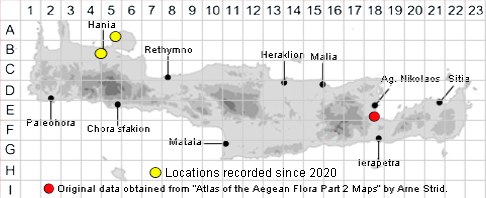
SPECIES DESCRIPTION
ALCEA SETOSA
Family and Genus:- See MALVACEAE
Common Name:- None
Homotypic Synonyms:- Althaea setosa.
Meaning:- Alcea (Gr) A name used by the Greek physician and botanist
Dioscorides.
Setosa (L) Covered with bristles or stiff hairs.
General description:- Medium to tall hairy perennial.
Stem:-
1) Up to 2.5 m tall, sometimes purple-spotted, hispid-setose with long, simple or
fascicled hairs, tomentose with short stellate hairs only when young.
Leaves:-
1) Cordate-orbicular to deltate, the
a) upper, usually divided for 1/2-2/3 of the radius into 3-5 oblong or deltate,
obtuse, crenate lobes.
Flowers:-
1) Epicalyx-segments. triangular, acute, sepals similar but rather larger, without
prominent veins.
2) Petals, 35-50 x 40-55 mm, almost contiguous, violet, usually with a yellow base.
Fruit:-
1) Mericarps, 6 mm, dorsal face densely hairy, with a shallow furrow, angles
rugose, not winged; lateral faces appressed-setose.
Key features:-
1) Upper leaves, not divided for more than 3/4 of the radius.
2) Stem, sparsely setose or ± glabrous at maturity.
3) Mericarp, furrow on dorsal face, rather shallow, largely obscured by hairs, angles
not winged.
Habitat:- Roadsides, field margins, ruderal habitats in towns and villages. 0-400 m.
Distribution:- A few scattered records from mainland Greece and Peloponnisos. -
Also reported from W & S Anatolia, Cyprus and W Syria. Very rare on Crete
currently known from only one location near Istron in the east.
Flowering time:- May-July, sometimes to Sept.
Photos by:- Courtesy of Wiki-Commons
